From the Factory, History | July 23, 2025
The Holy Grail of Martin Guitars: A Closer Look at the Pre-War D-45
With only 91 ever made before World War II, the pre-war D-45 remains one of the most coveted acoustic guitars in history—and one of Martin’s most storied creations.
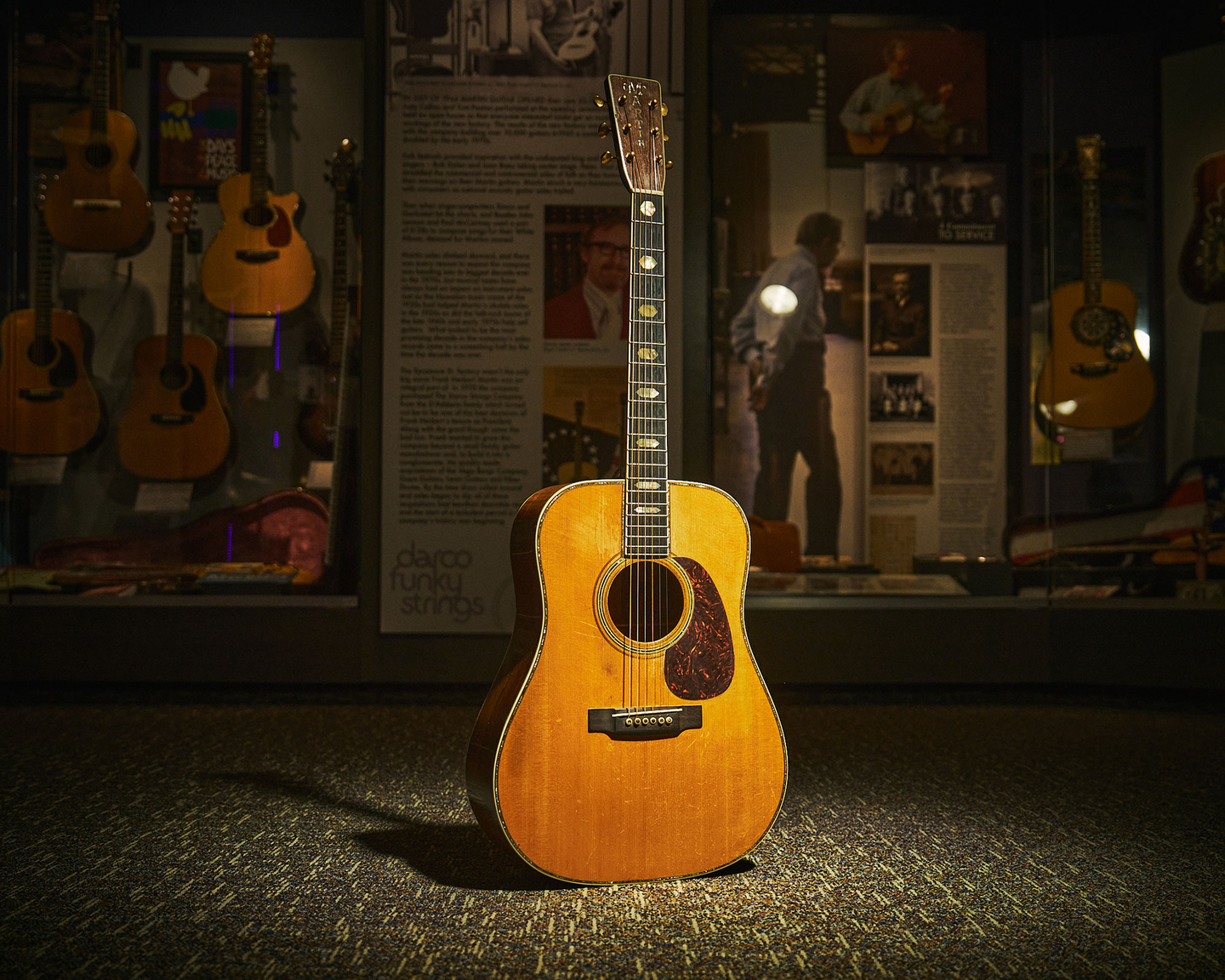
All guitars make music. A rare few make history.
Then there’s the pre-war Martin D-45—an instrument so extraordinary, so meticulously crafted, and so limited in number, it’s earned a near-mythical status among musicians and collectors. Often called the “Holy Grail” of acoustic guitars, only 91 were built before World War II halted their production. Today, these guitars represent the pinnacle of Martin’s legacy—and one of the most coveted finds in the vintage guitar world.
...And one of them lives at the Martin Guitar Museum in Nazareth, Pennsylvania.
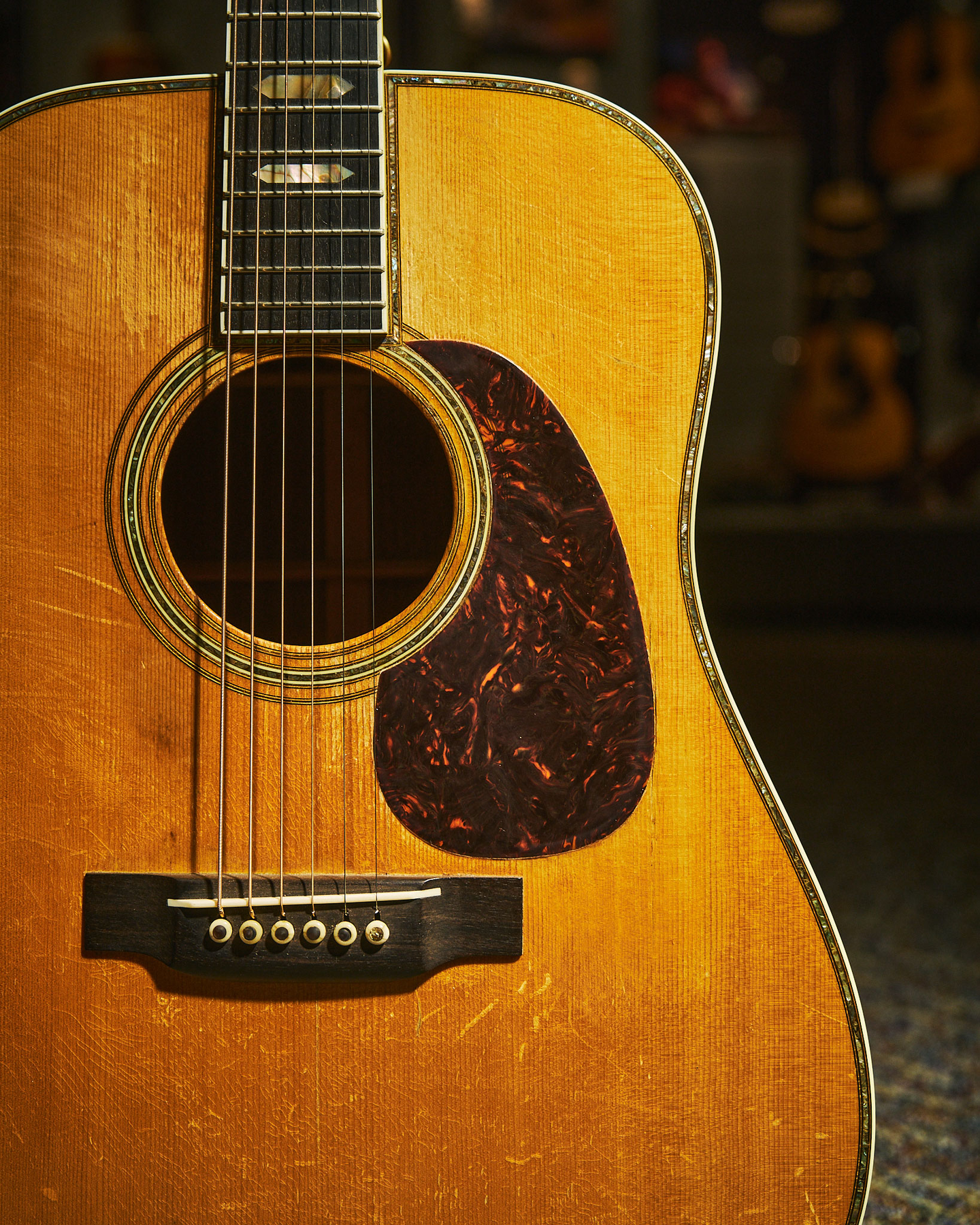
A rare 1942 D-45—serial number 81578—currently on display in the Martin Museum.
A Museum Centerpiece
On display behind glass, just steps from where Martin guitars are still crafted today, sits serial number 81578. It's the 80th of the 91 models made, and its presence in the museum offers a rare opportunity to see one of these guitars up close.
“The pre-war D-45 that we have in our collection is from 1942,” says Jason Ahner, Martin’s archives and museum manager. “It has all those woods that people look for in a vintage Martin—a Style 45 Adirondack spruce top, Brazilian rosewood back and sides, and solid pearl. Back then, there was no laminate pearl. This is all solid shell.”
Martin acquired the guitar with help from vintage experts Jim Baggett of Mass Street Music and Fred Oster of Vintage Instruments. Aside from a single added strap button, it remains an extraordinary, all-original example of pre-war craftsmanship—exactly the kind of detail and care that makes these models so revered.
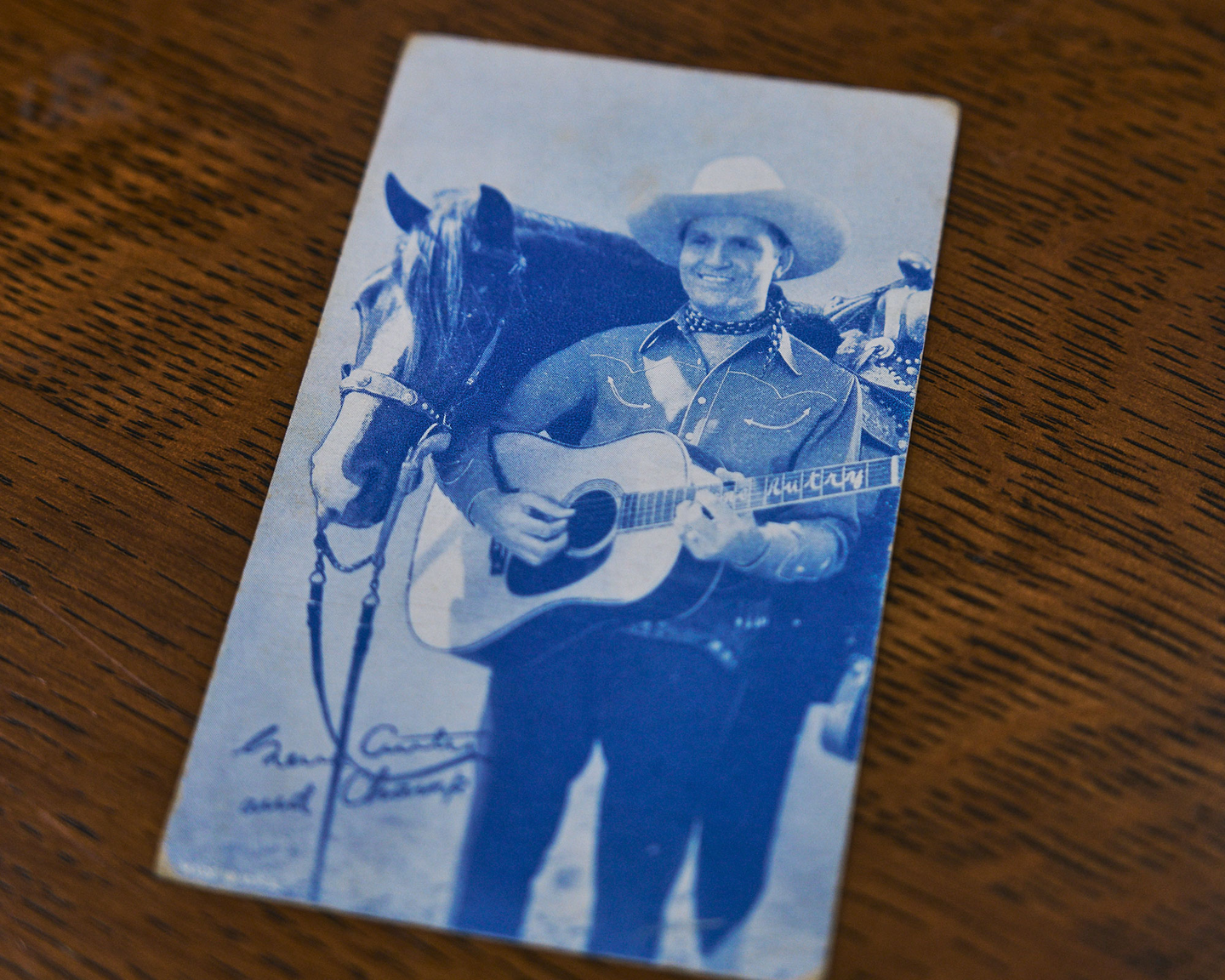
The “Singing Cowboy,” Gene Autry, with his 1933 Martin D-45—the first-ever D-45—alongside Champion the Wonder Horse.
A Star-Studded Beginning
The D-45’s story starts with a star. In 1933, Gene Autry—already a successful performer—ordered a custom Martin that would become the very first D-45. His 12-fret Dreadnought with a slotted headstock, adorned with pearl—including his signature across the fingerboard—and marked “D-45” on the neck block, was the definition of special.
While the ornate Style 45 appointments weren’t new—they had been appearing on smaller-bodied Martins since shortly after the turn of the century—this was the first time they were applied to a Dreadnought. The result was a striking fusion of Martin’s most powerful body shape with its most elegant aesthetic details.
“Autry had other Martins before that,” Jason says. “But he was making more money and was aware of Style 45s, so he wanted as much pearl as he could get.”
That one-of-a-kind order set the tone for what the model would become: a guitar of exceptional quality and exclusivity, often made one at a time for individual buyers. For the first few years, production was sporadic—just one in 1933, one in 1934, and two more in 1936.
“It’s not like they were building tons of them like D-18s or D-28s,” Jason explains. “These early D-45s were built gradually, and many had custom specs.”
In 1938, Martin swapped out the traditional snowflake fingerboard inlays for the now-iconic hexagons—borrowed from the company’s F Series archtops. Bit by bit, the model became more standardized, but no two early D-45s were exactly alike.
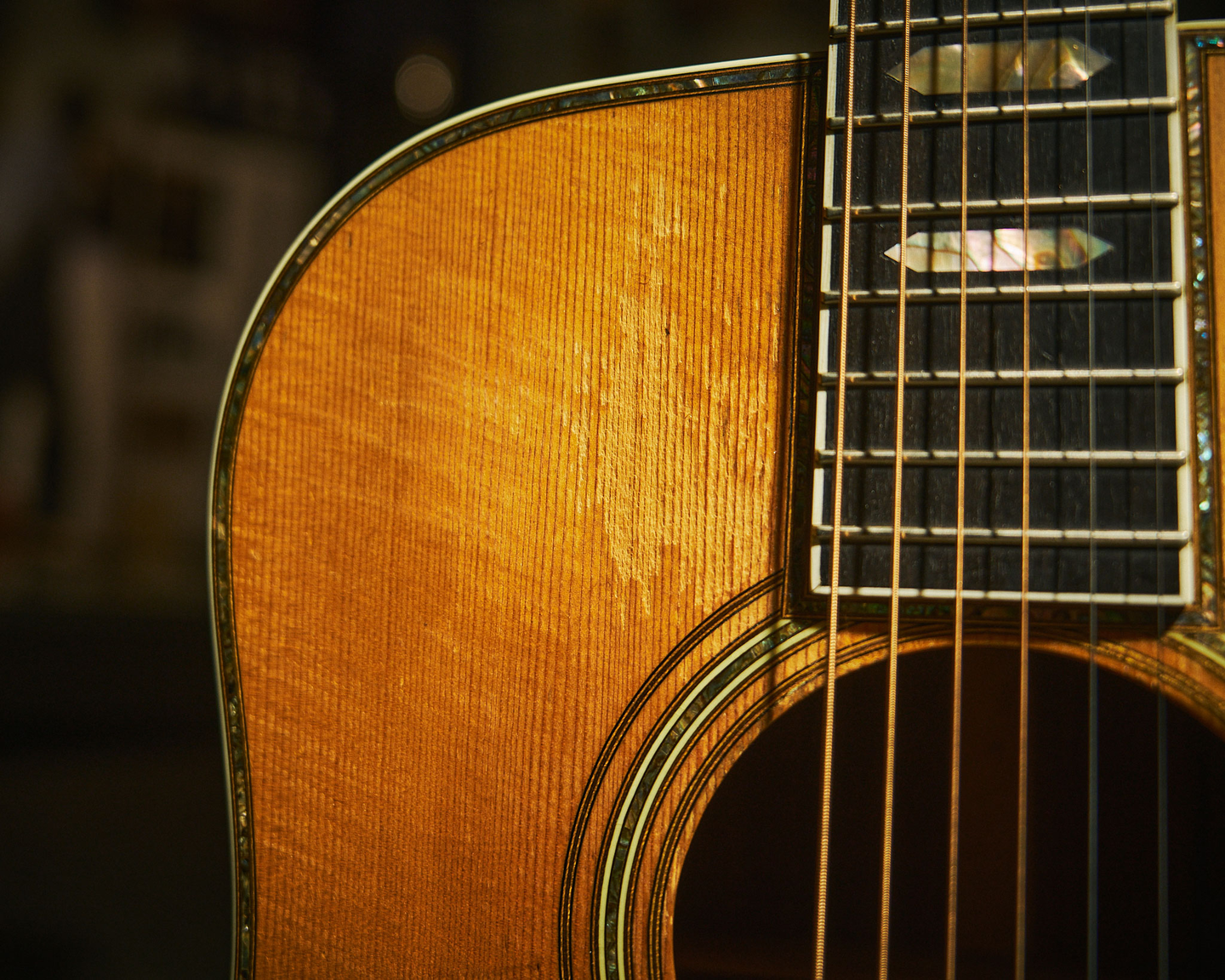
Wartime Interruption
By 1942, just as production of the model was ramping up, the world changed. Faced with wartime shortages and the need to streamline operations, Martin suspended all production of pearl-bordered guitars.
“They were trying to be as efficient as possible,” Jason says. “And the pearl-bordered guitars took longer, so they were eliminated.”
The D-45 wouldn’t return to Martin’s catalog until 1968, but during that long pause, its legend quietly grew.
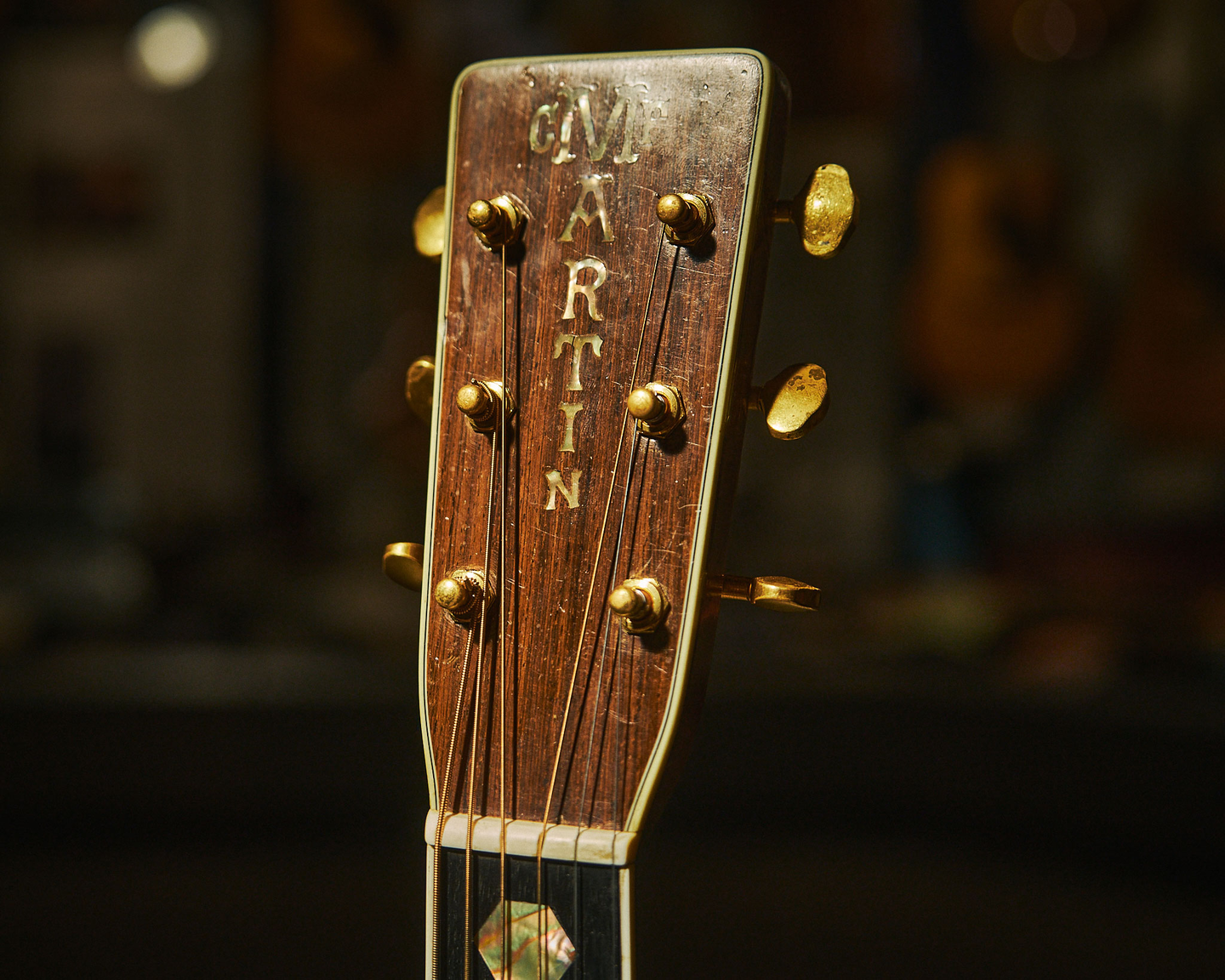
A Collector’s Dream
By the mid-1960s, the vintage guitar market had started to take shape. Musicians and collectors alike were scouring the country for pre-war Martins—especially D-45s.
“A lot of people feel a pre-war D-45 is the pinnacle of acoustic guitar collecting,” Jason says. “It’s the combination of extremely low production numbers—just 91 guitars over nine years—and the premium materials. These were built with top-grade spruce and rosewood.”
The list of owners is as impressive as the guitars themselves. Some, like Stephen Stills, have owned more than one pre-war D-45. Johnny Cash, Marty Stuart, Hank Williams Jr., and Vince Gill have all been known to own and play them. The members of Crosby, Stills, Nash & Young liked the guitars so much, they each bought a D-45 when the model was reintroduced to Martin’s lineup in the late ’60s. Even Jimi Hendrix purchased one—which now resides in the Museum of Pop Culture in Seattle.
It’s not just musicians, either. Serious collectors, including the late Indianapolis Colts owner Jim Irsay, have gravitated toward pre-war D-45s, drawn by their rarity, beauty, and historical significance.
The last known sale of a pre-war D-45? Over a million dollars—without any famous connection, just the guitar itself.
“These guitars aren’t just rare,” Jason adds. “They’re incredibly valuable, even if they weren’t tied to someone famous. That says everything about how special they are.”
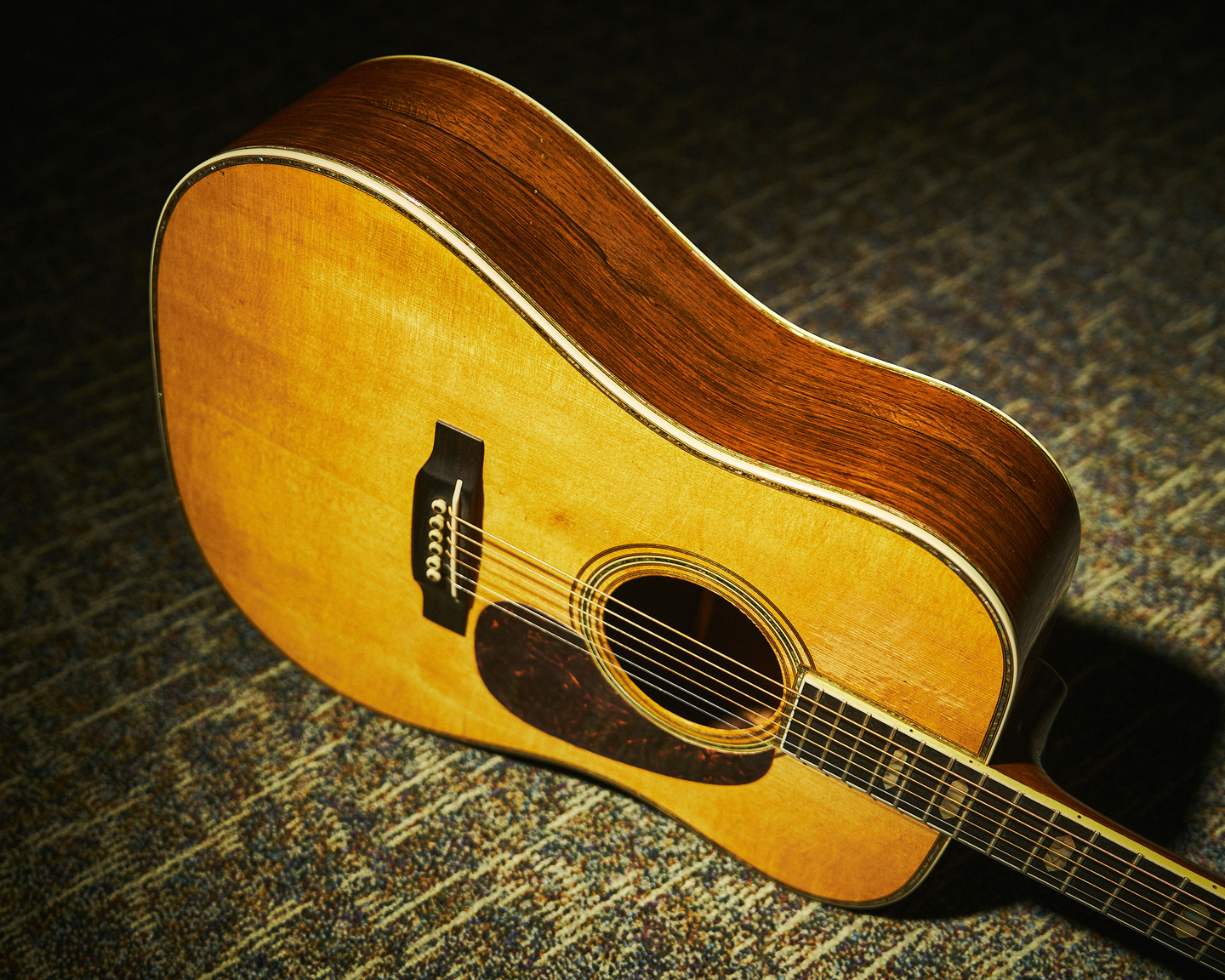
Variations on a Theme
While each pre-war D-45 followed the same high-level formula—Adirondack spruce, Brazilian rosewood, pearl purfling—the early models featured plenty of unique deviations. One had a sunburst top. Another was left-handed. Some had wider bodies. One even had two pickguards. And like Autry’s, a few others had names inlaid across the fingerboard, including those of Ken MacKenzie and Jackie “Kid” Moore.
Back then, these personalized guitars carried the “S” designation—D-45S—but the meaning has since evolved.
“Now people see the S and think it means 12-fret or slotted headstock,” Jason explains. “But back then, it just meant ‘special.’ That could be a name on the fingerboard, a wider body—it’s what we would call a custom today.”
And yet, these special models were built alongside standard models, flowing through the same hands and workstations at Martin’s original North Street factory. “They were treated like any other guitar going through production,” Jason says. “Martin didn’t officially open the Custom Shop until 1979. So, anything before that, including special orders, was part of the regular build process.”
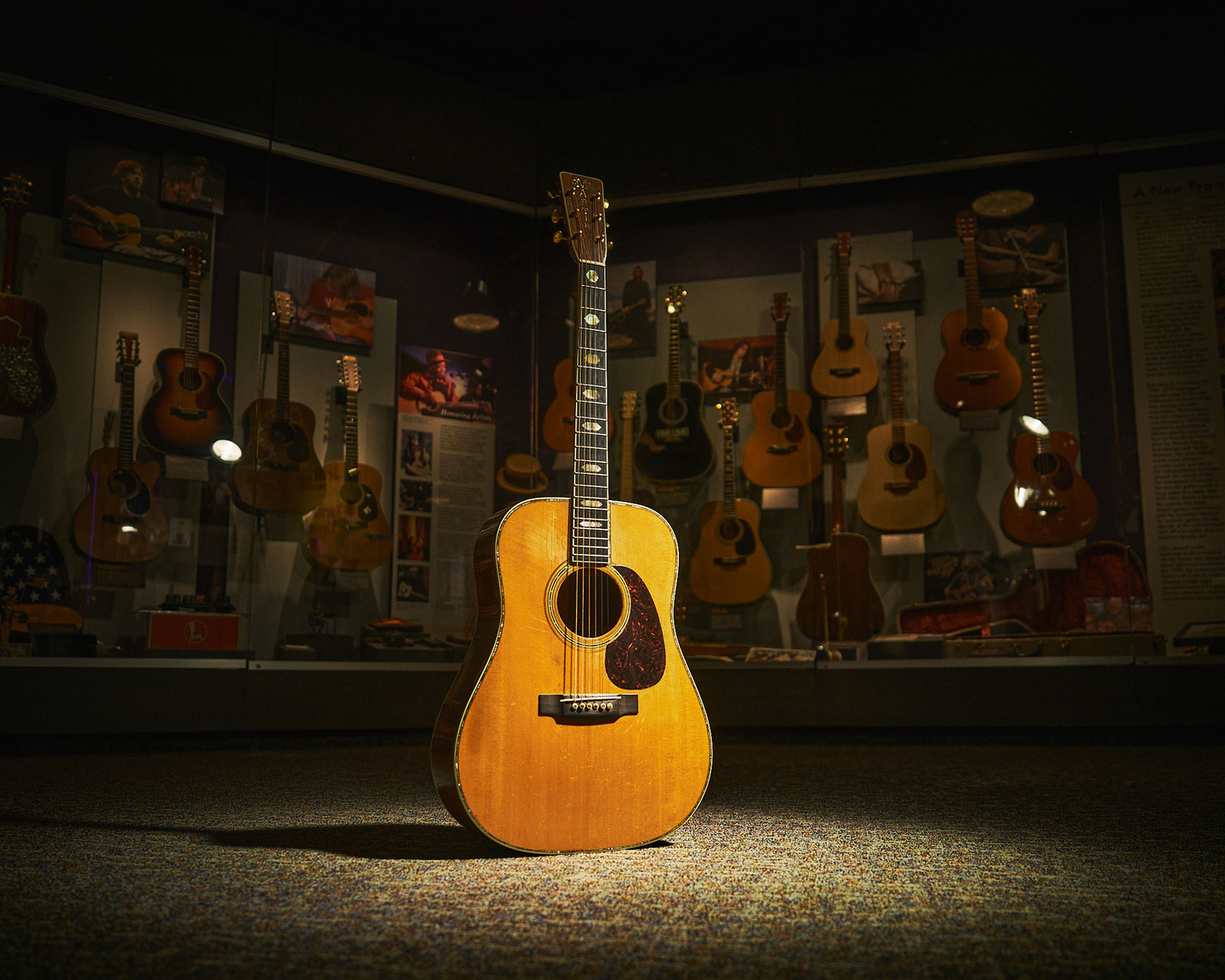
Echoes of the Past
Today, the Martin Museum’s pre-war D-45, number 80 of 91, serves as a direct connection to the past. It has inspired both Authentic Series recreations and upcoming projects, and now sits at the heart of the museum’s storytelling. While the original shop order, shipping records, and rare images of early D-45 owners like Toby Stroud and Jackie “Kid” Moore are housed in the museum archives, you can get a glimpse of some of that history in the photos below.
And if you ever find yourself pulling into Nazareth, the Martin Guitar Museum offers a rare opportunity to stand face to face with music history—including this special guitar—pearl, patina, and all.
Only 91 were ever made before the war, but their impact has never faded. Their story is still being told. And remarkably, the D-45 isn’t just a relic of the past—it’s still being made today.
“As you know, now in the Standard Series, that’s our flagship model—the D-45,” says Jason. “And it was the same back then.”
For those who understand the magic of a Martin, the pre-war D-45 remains as powerful—and inspiring—as ever.
Until next time, happy playing!


















